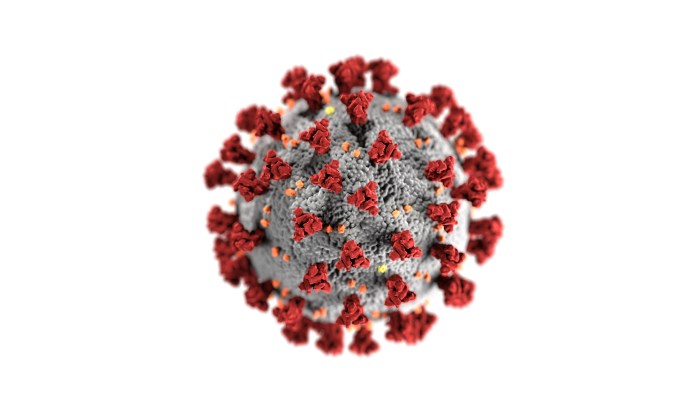By Nancy Lapid
The following is a roundup of some of the latest scientific studies on the novel coronavirus and efforts to find treatments and vaccines for Covid-19, the illness caused by the virus.
Multiple variants can “escape” vaccines
Antibodies induced by the Moderna Inc and Pfizer Inc/BioNTech SE vaccines are dramatically less effective at neutralizing some of the most worrying coronavirus variants, a new study suggests.
Researchers obtained blood samples from 99 individuals who had received one or two doses of either vaccine and tested their vaccine-induced antibodies against virus replicas engineered to mimic 10 globally circulating variants. Five of the 10 variants were “highly resistant to neutralization,” even when volunteers had received both doses of the vaccines, the researchers reported on Friday in Cell. All five highly resistant variants had mutations in the spike on the virus surface – known as K417N/T, E484K, and N501Y – that characterize a variant rampant in South Africa and two variants spreading rapidly in Brazil.
In keeping with previous studies, the proportion of neutralizing antibodies dropped 5- to 6-fold against the variants discovered in Brazil. Against the variant discovered in South Africa, neutralization fell 20- to 44-fold. A variant circulating now in New York has the E484K mutation.
“While studies of the New York variant are ongoing, our findings suggest that similar variants harboring E484K may be harder for vaccine-induced antibodies to neutralize,” said study leader Alejandro Balazs of Harvard University and the Massachusetts General Hospital.
“Despite our results,” he added, “it’s important to consider that vaccines raise other kinds of immune responses which could protect against developing severe disease.”
Variant identified in UK is deadlier
The coronavirus variant first identified in the UK, known as B.1.1.7, is deadlier than other variants circulating there, a new study appears to confirm.
Researchers analyzed data on 184,786 people in England diagnosed with Covid-19 between mid-November and mid-January, including 867 who died. For every three people who died within four weeks after being infected with another variant, roughly five died after becoming infected with B.1.1.7, according to a paper posted on medRxiv ahead of peer review.
Overall, the risk of death with B.1.1.7 was 67% higher than the risk with other variants in England, the authors said. As with earlier variants, patients’ risk of death increased with age, male gender, and pre-existing medical conditions. B.1.1.7 is now prevalent across Europe and predicted to become prevalent in the United States.
“Crucially,” the researchers wrote, “emerging data suggest that the currently approved vaccines for SARS-CoV-2 are effective against the B.1.1.7.”
Variant identified in Brazil is doubly infectious
Between November and January in Manaus, Brazil, the frequency of Covid-19 cases involving the P.1 coronavirus variant increased from non-existent to 73%, and the number of infections there quadrupled compared to what the city experienced in the first wave of the pandemic, according to a report posted on medRxiv ahead of peer review.
The greater infectiousness of the P.1 variant likely contributed to that, the report suggests. Based on national health surveillance data, the authors estimate that the P.1 variant is roughly 2.5 times more transmissible than previous variants circulating in Manaus.
The spread of P.1 occurred despite the fact that 68% of the city’s population had already been infected by the original strain of the coronavirus, the researchers noted. In their analysis, the risk of reinfection with P.1 was low. The ability of the variant to cause severe disease, or its pathogenicity, is still unclear.
“The P.1 variant has already been detected in at least 25 countries,” the authors said. “This calls for urgent … studies of the P.1 variant, since greater transmissibility and pathogenicity can drive even well-prepared health systems to collapse.”
To avoid infection, new CPR technique adds distance
To avoid coronavirus infection during cardiopulmonary resuscitation (CPR), medical professionals can increase their distance from the patient by doing chest compressions using the unshod heel of the foot — known as leg-heel compression — instead of their hands, a new study suggests.
Researchers had 20 medical professionals perform standard manual chest compression followed by leg-heel chest compression after a brief instruction on a manikin. There was no difference in any of the variables measured, including correct placement of the heel for purposes of compression, correct depth of chest compression, and the compression rate.
The study found potential spread of breath droplets from the patient to the person performing CPR would likely be minimized with leg-heel compression.
“Under special circumstances like Covid-19-pandemic, leg-heel chest compression may be an effective alternative … compared to manual chest compression while markedly increasing the distance to the patient,” the researchers concluded in a paper posted on Monday on medRiv ahead of peer review.
Open https://tmsnrt.rs/3c7R3Bl in an external browser for a Reuters graphic on vaccines in development.
(Reporting by Nancy Lapid; additional reporting by Christine Soares. Editing by Bill Berkrot)
For more coronavirus coverage, visit longislandpress.com/coronavirus.



























